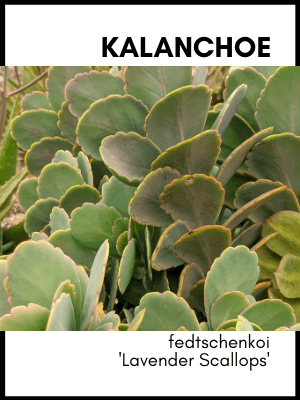Kalanchoe fedtschenkoi ‘Lavender Scallops’, also known as “Variegated Lavender Scallops”, is a unique cultivar of the species Kalanchoe fedtschenkoi, native to Madagascar. The specific epithet fedtschenkoi honors botanist Boris Fedtschenko (1873-1947). It is widely sold as a house or garden plant and has established itself in the wild in some southern parts of the United States. With its thick and fleshy leaves that are a blue-green color and scalloped edges, it can be a beautiful addition to any garden or indoor collection. In this guide, we will explore everything you need to know about growing and caring for Kalanchoe fedtschenkoi ‘Lavender Scallops’.

Description
Kalanchoe fedtschenkoi ‘Lavender Scallops’ is a low-growing, frost-tender perennial succulent which prefers dry, open ground. It grows to 10–12 inches (25–30 cm) tall as an untidy, low, rounded herb. The stems are round, smooth and lax with visible leaf scars, often bending and touching the ground where they produce roots and new plants. Leaves are fleshy, alternate, blue-green and oval or obovate with fine scalloped edges, the edges may turn pink or red under strong sunlight or drought conditions. The tubular flowers are in corymbs, often multi-layered in good conditions. Each flower has a short calyx edged with delta-shaped segments, which is shorter than its tubular corolla. The corolla is an orange/coral/apricot color, and the flowers are pendant.

The common name, “Lavender Scallops,” comes from the shape and color of its leaves. This cultivar is considered to be quite low maintenance and few pests are known to infest it, however, it may harbor mealy bugs or occasionally scale insects. Mine ALWAYS get attacked by snails and slugs after it rains.
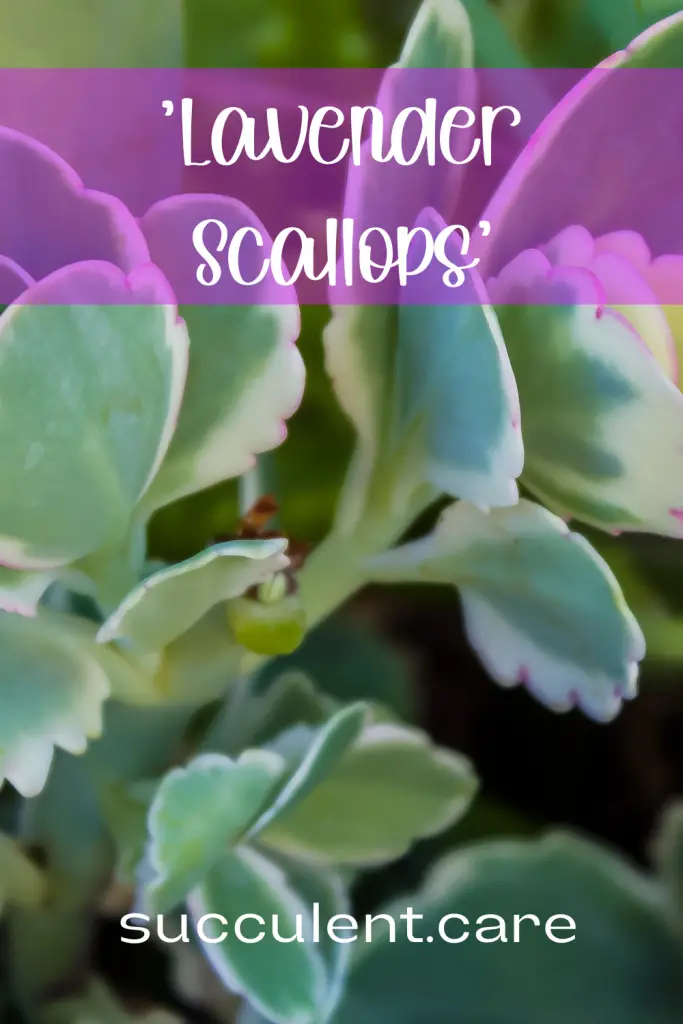
Kalanchoe fedtschenkoi ‘Lavender Scallops’ Care and Maintenance
Light Requirements
Kalanchoe fedtschenkoi ‘Lavender Scallops’ prefers partial sun to partial shade. Direct sunlight can cause the leaves to turn red or pink, but too little light will result in a leggy plant with fewer flowers.
This plant is not cold-hardy and prefers warm temperatures, it will die if exposed to frost.
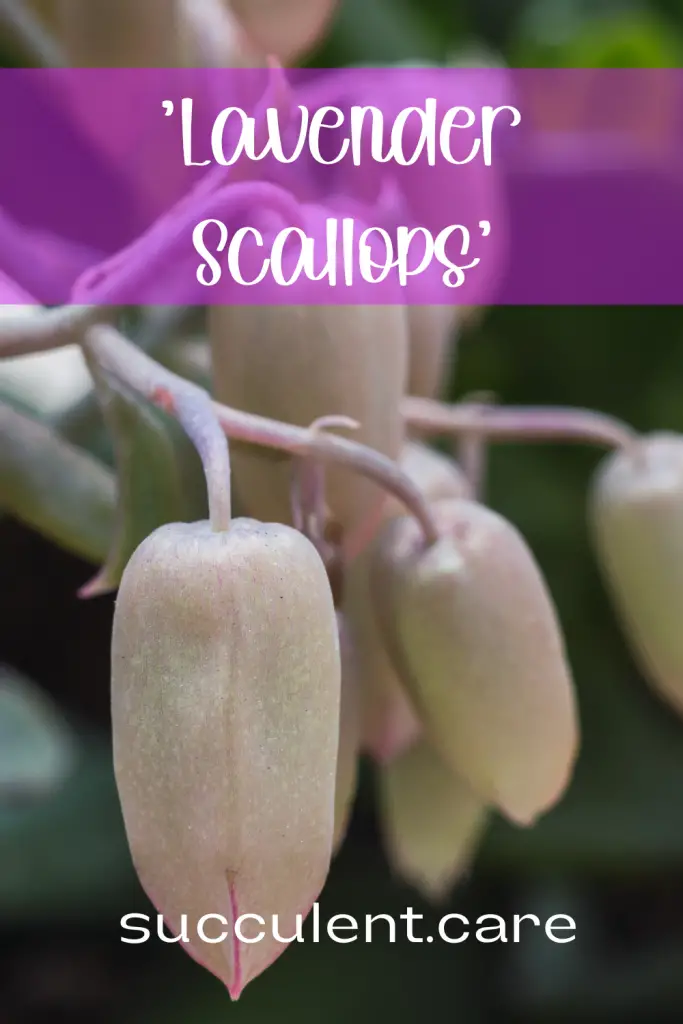
Watering and Fertilizing
Kalanchoe fedtschenkoi ‘Lavender Scallops’ should be watered sparingly and allow the soil to dry out slightly between watering. Overwatering can lead to root rot, so it is important to make sure the soil has good drainage. Fertilize occasionally with a balanced, water-soluble fertilizer during the growing season.
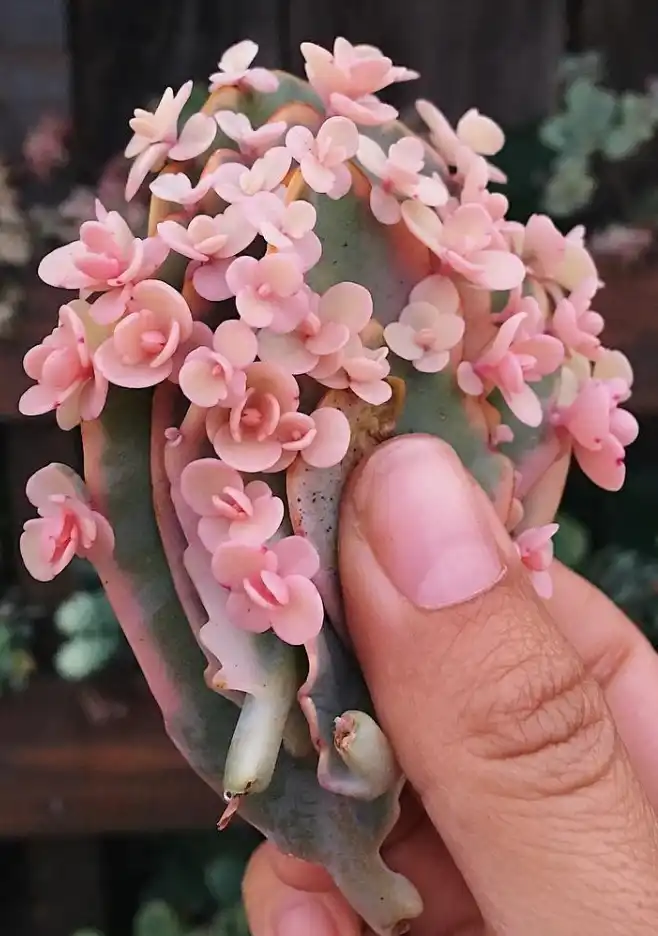
Kalanchoe fedtschenkoi ‘Lavender Scallops’ can be propagated by taking leaf cuttings or plantlets and rooting them in soil.

Pests and Diseases
This cultivar may harbor mealy bugs or occasionally scale insects. Overwatering or poor drainage can lead to root rot.
Special Kalanchoe Care Tips
It is important to keep an eye on the plantlets and remove them from the main plant if they are crowding the main plant or if you want to propagate them. Be aware that this plant is considered an invasive species in some regions and it is illegal to grow it in those regions.
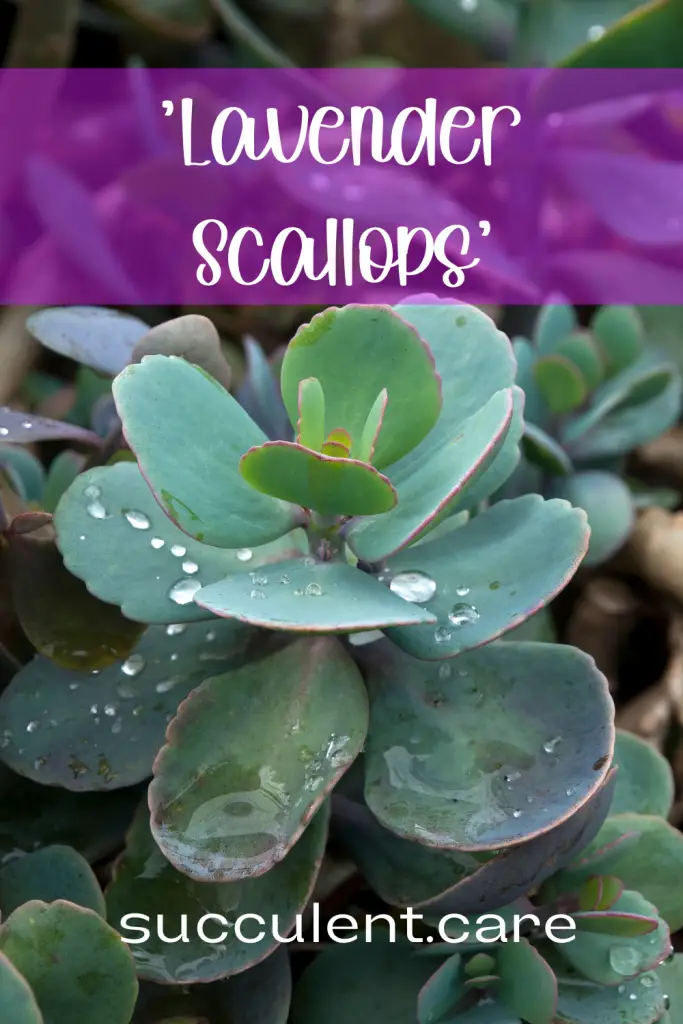
Hardy Zones
Kalanchoe fedtschenkoi ‘Lavender Scallops’ is hardy in zone 10a (minimum 30°F | -1.1°C).
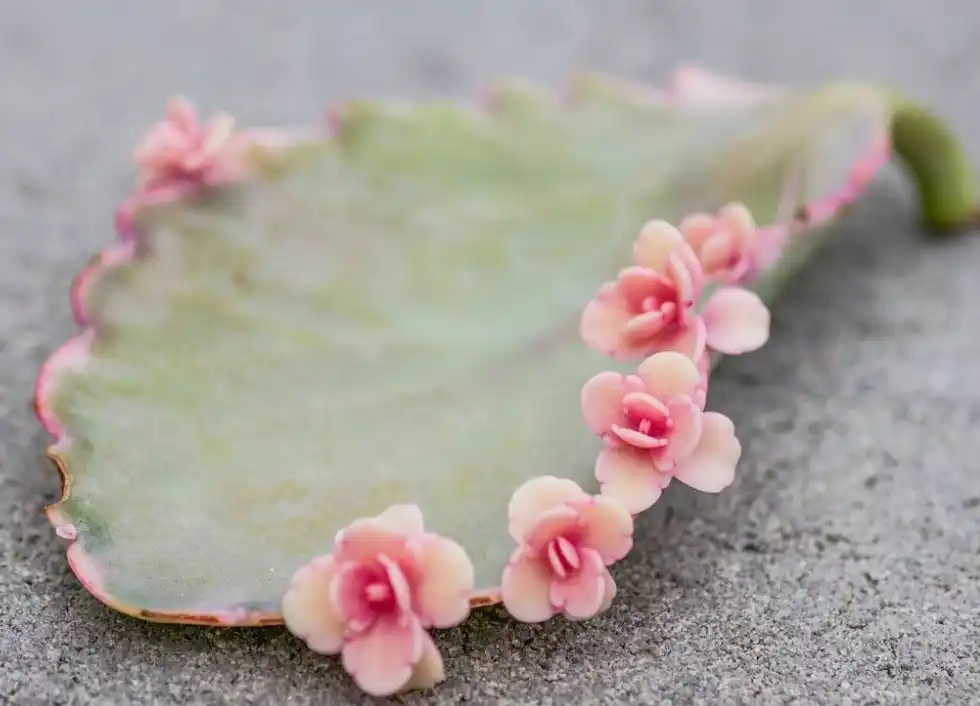
Toxicity
Kalanchoe fedtschenkoi can be toxic to people and pets, it is important to keep it out of reach of children and animals.
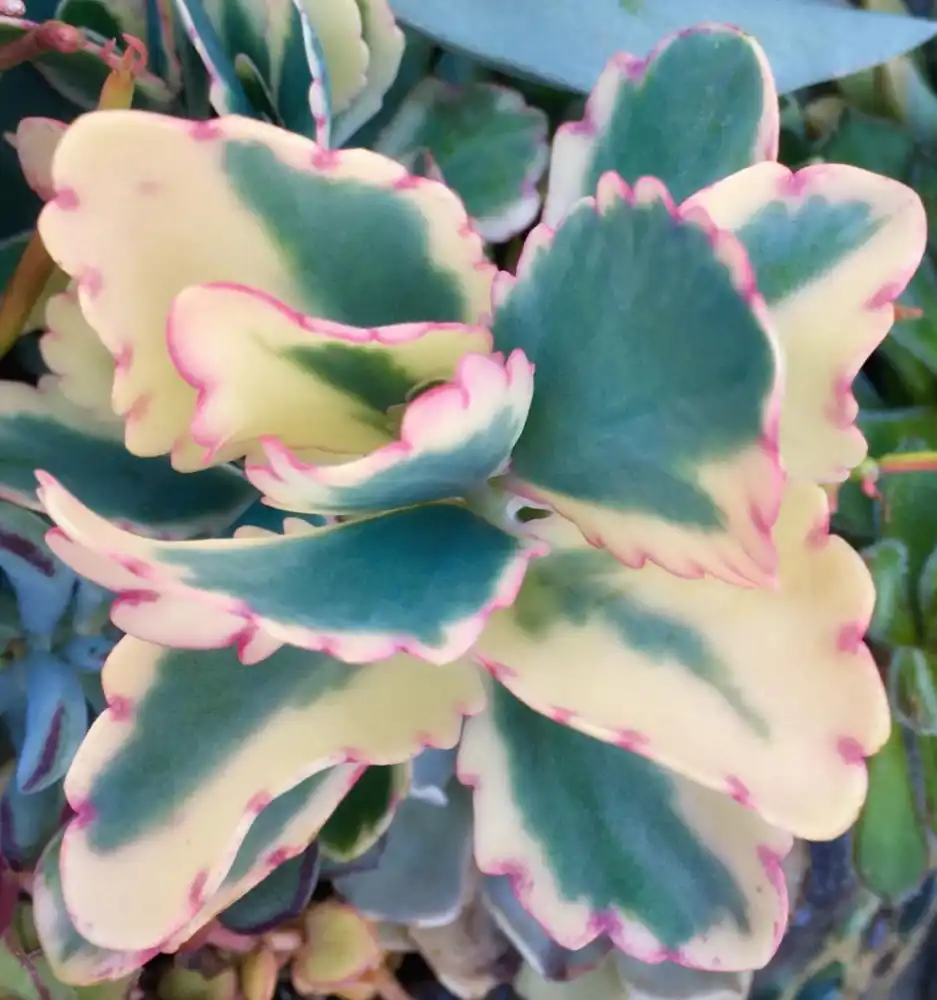
Cultivation
Kalanchoe fedtschenkoi ‘Lavender Scallops’ can be grown indoors near a sunny window, but it is not tolerant of low light conditions.
In cooler climates, it should be grown as an annual or container plant.
This cultivar is well suited for growing in pots or as a groundcover in rock gardens or in areas with well-drained soil. It can also be used as a hanging plant or in a dish garden.
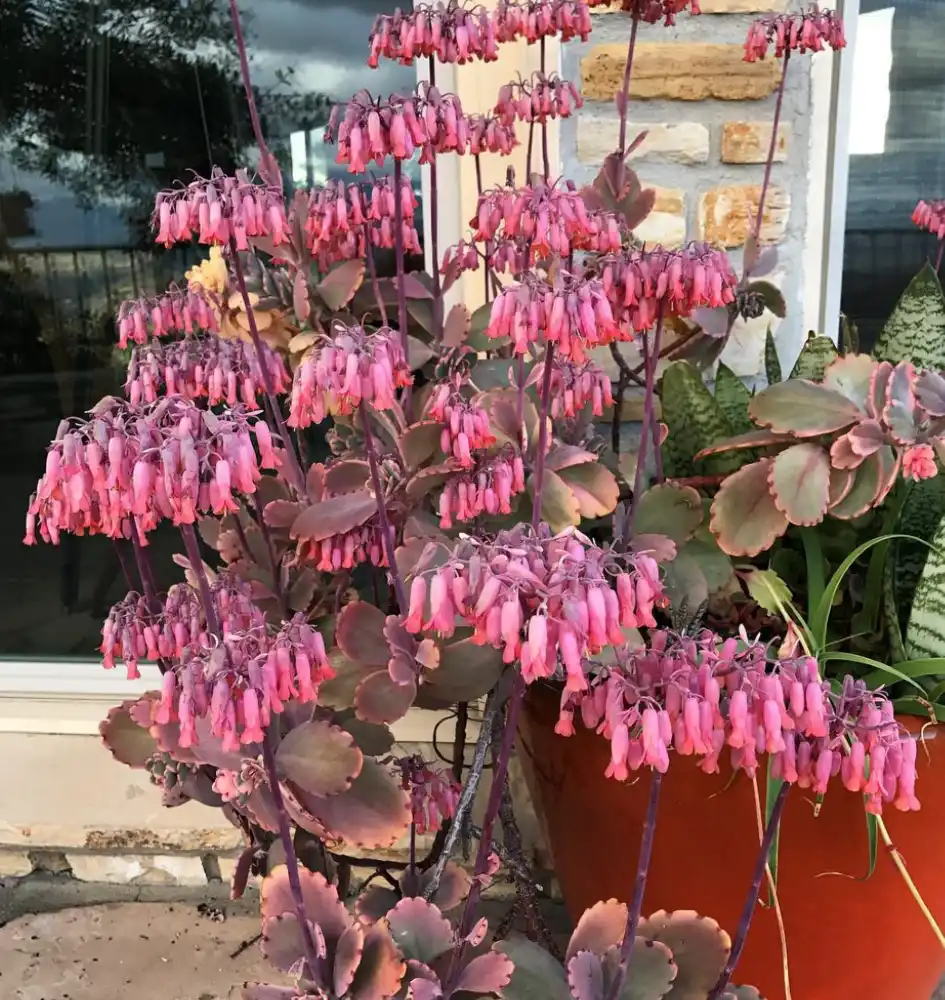
Kalanchoe Care Conclusion
Kalanchoe fedtschenkoi ‘Lavender Scallops’ is a unique and beautiful succulent that can be a great addition to any garden or indoor collection. Its low maintenance and easy propagation make it a great choice for gardeners of all experience levels. However, it’s important to keep in mind that it is considered an invasive species in some regions, so it’s important to check the legality of growing it in your area before purchasing one. With the right care and attention, Kalanchoe fedtschenkoi ‘Lavender Scallops’ will reward you with stunning flowers and beautiful foliage. Happy gardening!

